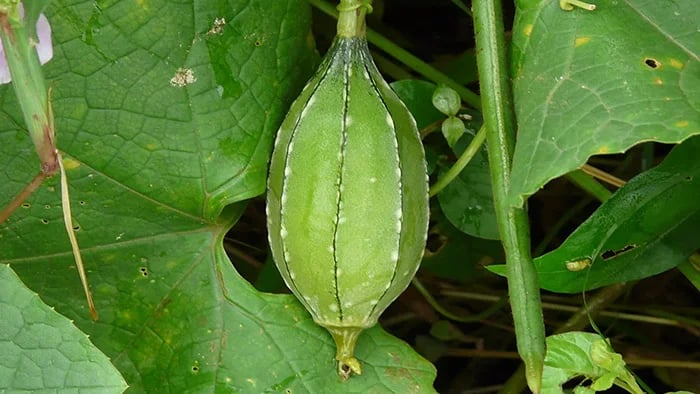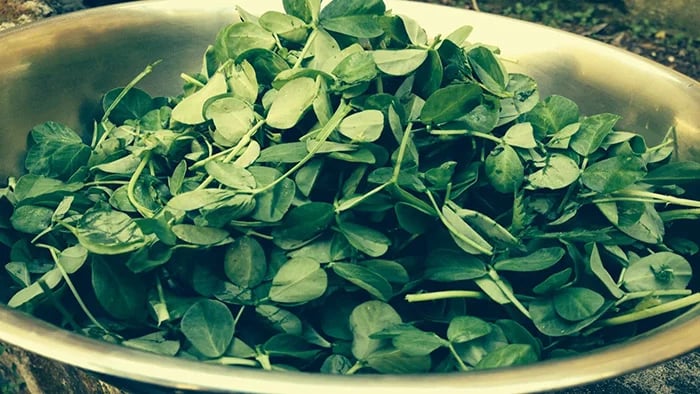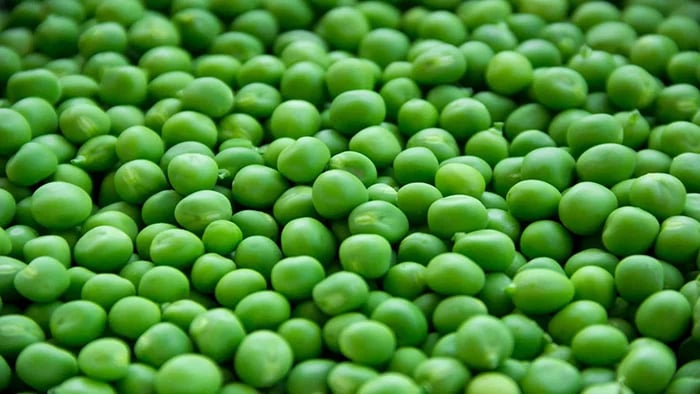- Ridge gourd (Turai)
- Amaranth Leaves
- Fenugreek Leaves
- Cauliflower
- Drumsticks (Moringa)
- Peas
- Bottle Gourd (Lauki)
Vitamins and minerals are necessary for your kids' health. Although these macronutrients, such as fats and carbohydrates, are not needed heavily in everyday consumption, a small amount is essential because they can cause different kinds of deficiency.
One such essential nutrient for kids is vitamin D. Vitamin D helps strengthen bone and bone flexibility. Vitamin D deficiency can make your kids prone to weak and brittle bones.
Vitamin D is mainly present in meat and dairy, but you can also get it from different kinds of vegetables and superfoods mentioned below. You can make different bhujias or curries according to your child's preference and feed them vitamin D regularly without any hassle.
Top 7 Vitamin D-Rich Vegetables
1. Ridge gourd (Turai)

Ridge gourd is mostly used in Indian cuisine. It is a low-calorie vegetable with lots of vitamin D and other nutrients. One can always make a bhujia or a gravy of this vegetable, which can go perfectly with rice and roti for your kids. Most of the time, kids are not very excited about this vegetable, but a little bit of achar or raita on the side can make it easy to eat. If your child doesn't want to eat it, you can hide the vegetable by blending it with dal and lots of ghee and spices.
2. Amaranth Leaves
It is safe to say that a lot of green vegetables have plenty of vitamin D in them, alongside dairy and meat. Chaulai saag or Amaranth Leaves are very popular green, especially in East India. It looks similar to Grass with short stems but is very delicious to eat. Once it is prepped properly, it can also be made as a curry or even added to a Dal for a better taste. Also, if your kid is not on the side of eating it, you can make delicious garlic and Chaulai paratha for the best taste that caters to your child.
3. Fenugreek Leaves

According to the NIH, fenugreek leaves are also evidently full of vitamin D. Every child loves Methi ka Paratha, or Methi ka Saag, with a few brinjals and lots of garlic. One can also try different recipes out of Methi ka Saag, such as pakora and chillas. Fenugreek leaves also have lots of iron, which supports other benefits. If your child doesn't like a strong taste, you can always boil the leaves before cooking it.
4. Cauliflower
Cauliflower is one of those superfoods that kids are not picky about as much as broccoli. Cauliflower has a mild taste and can be made into delicious dishes, no matter the cuisine. Boiled cauliflowers can also be made into chips by dehydrating them in the oven with lots of spices. It can also be made into delicious gobi Manchurian, and on and on. Cauliflowers not only make tasty food but are also very nutritious and have lots of Vitamins, including vitamin D. It also serves as one of the best alternatives if your child hates broccoli.
5. Drumsticks (Moringa)
Moringa drumsticks are a seasonal vegetable that is found around the spring season. It has many vitamins and minerals, especially vitamin D, which affect your child's immunity overall and result in stronger bones. There are many ways to include drumsticks in your kid's meal. You can simply boil it and add it to the dal to give it a flavorful taste, or you can make a curry out of these drumsticks with potatoes and pumpkin. In a Bengali household, they're mixed with different mustard and fish preparations. These drumsticks are very fun to eat for a kid and are delicious.
6. Peas

Green peas are also full of Vitamin D and can be found throughout the year. They can be added to curries, vegetables, and meat dishes to enhance children's vitamin D intake. One can also make paratha and puris with a green pea filling to make the kid's lunch more nutritious. Matar paneer can be another favorite dish for your child, with peas included.
7. Bottle Gourd (Lauki)
Bottle Gourds are not a kid's best friend, but the vegetable's nutritional values are uncountable. If you have a kid who is not picky, you can simply add them to the dal. But if your kid is not into this vegetable, make sure to blend it with different curries. It can be a good substitute for cornstarch slurry, as it is slightly sweet, and blending it in the curries will make it creamier.
Vitamin D is a macronutrient that you cannot ignore. If your kids don't eat meat or follow a vegetarian diet, make sure to use these vegetables to feed them the nutrition they need to grow up stronger and have good immunity. Plants are convenient regarding macronutrients, especially when one properly knows which plants and vegetables have more vitamin D content.
Smriti is a content writer who creates clear, practical, and informative content backed by science and relevant data. With a strong understanding of structured writing, she breaks down complex topics into simple, actionable insights. Her work is focused on helping readers prepare, learn, and grow with confidence and clarity.
The views expressed are that of the expert alone.
The information provided in this content is for informational purposes only and should not be considered a substitute for professional medical advice, diagnosis, or treatment. Always seek the advice of your physician or another qualified healthcare provider before making any significant changes to your diet, exercise, or medication routines.










